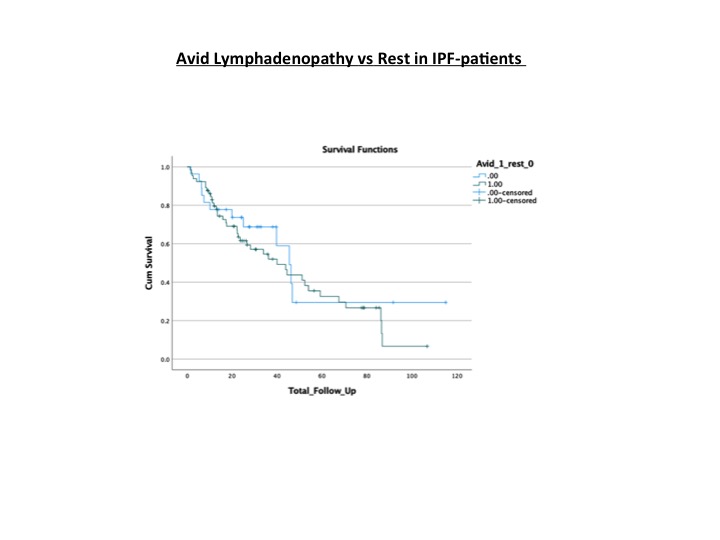Abstract
Introduction:Mediastinal lymphadenopathy is a common feature in patients with IPF. We investigated the relationship between node avidity and survival.
Aim:To assess the significance of FDG uptake in nodes of IPF patients undergoing PET imaging.
Materials and Methods:92 IPF patients were recruited prospectively. Mediastinal nodal FDG uptake was measured as SUVmax, SUVmin, and TBR (SUVmax/SUVmin). Kaplan Meier survival analysis was used to investigate overall survival between avid and non-avid node cohorts. Correlation between nodal uptake and Neutrophil lymphocyte ratio (NLR) was assessed using Pearson non-parametric Spearman?s rank correlation.
Results: Of 92 IPF patients, 83 had enlarged lymph nodes and 65 were avid. Patients with avid lymphadenopathy had poorer survival compared to the rest at 50 months (p=0.454). Using a median value as a cut-off, TBR ?1.72 was significantly associated with poorer outcome (p=0.05). Using an optimal value as a cut-off, SUVmax ?3.68 were significantly associated with poorer outcome (p=0.033).
FDG avidity (SUVmax and TBR) in the nodes correlated with NLR (p=0.033 and 0.041 respectively).
Conclusion:Increased FDG avidity in the mediastinal nodes of IPF patients is associated with poorer outcome. Nodal activity correlated with NLR.
